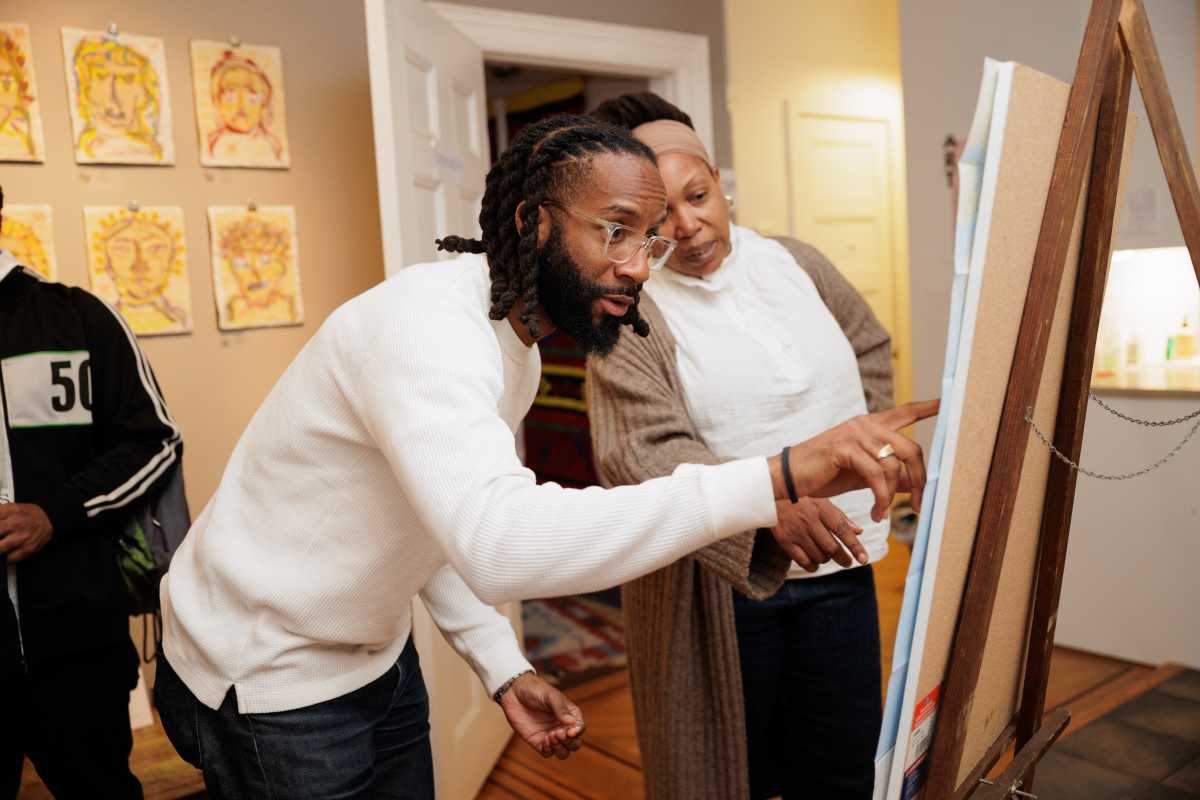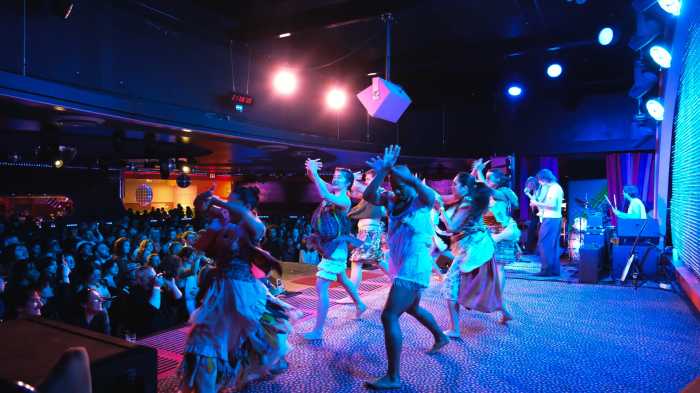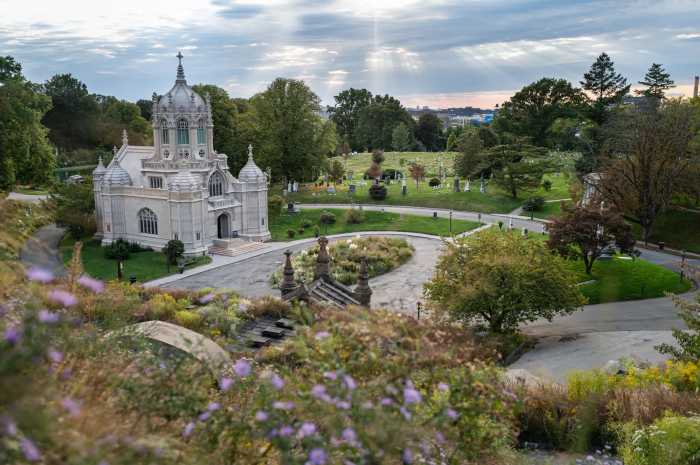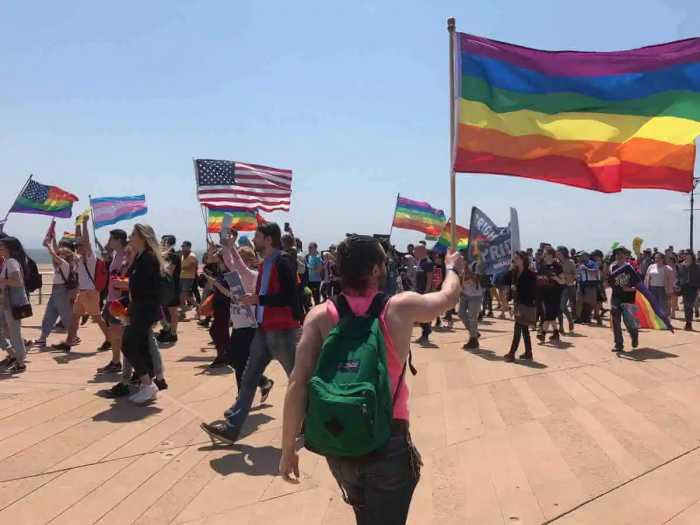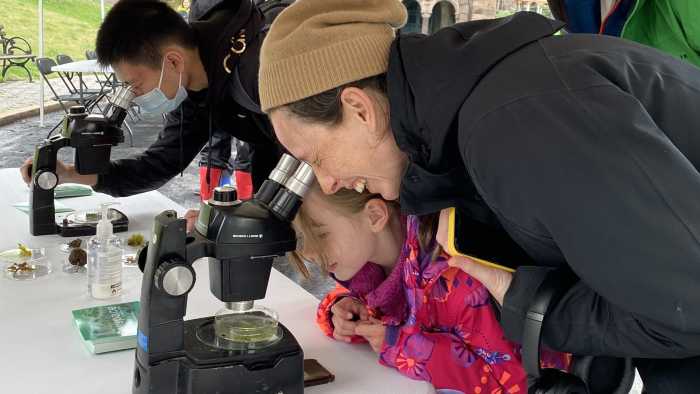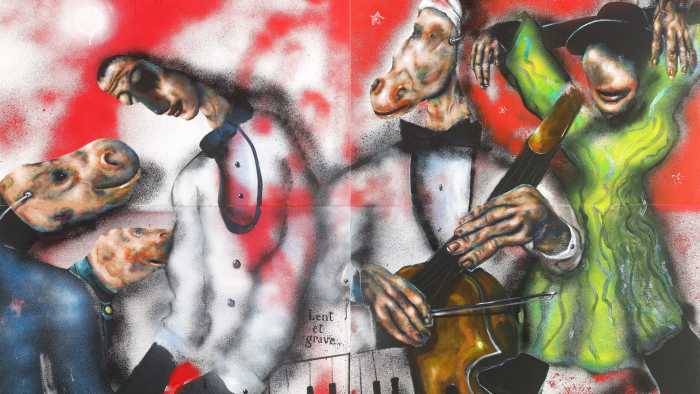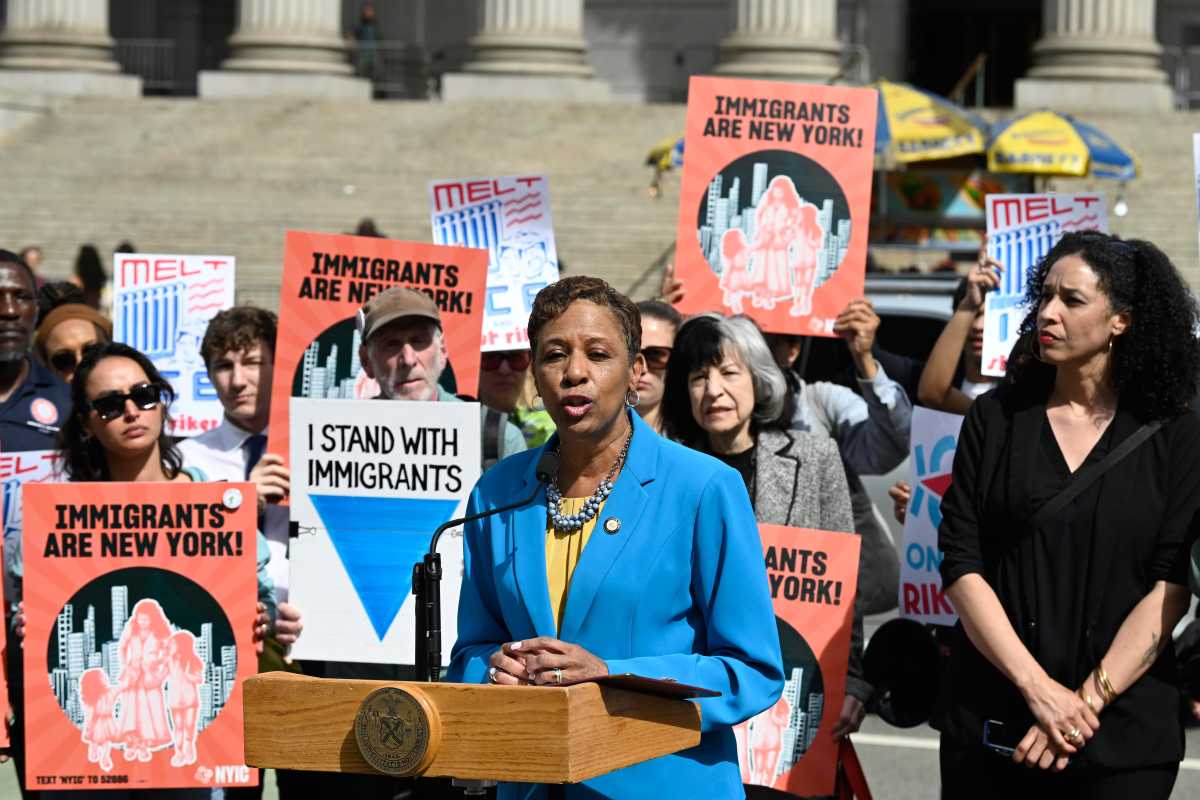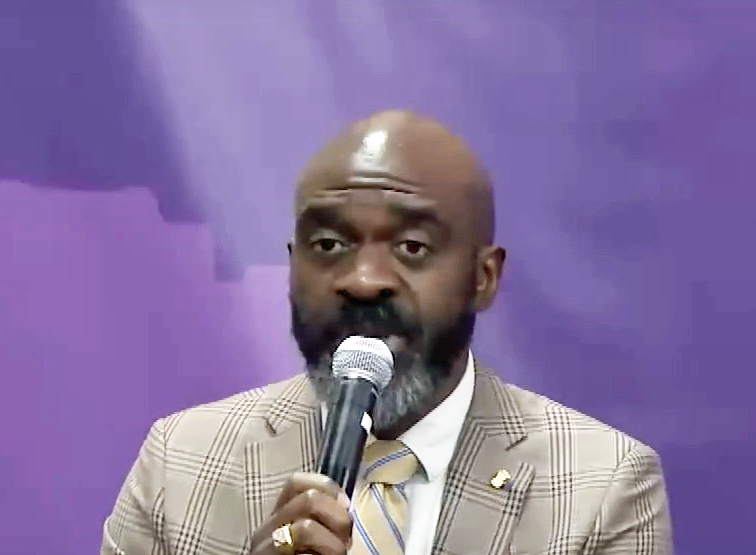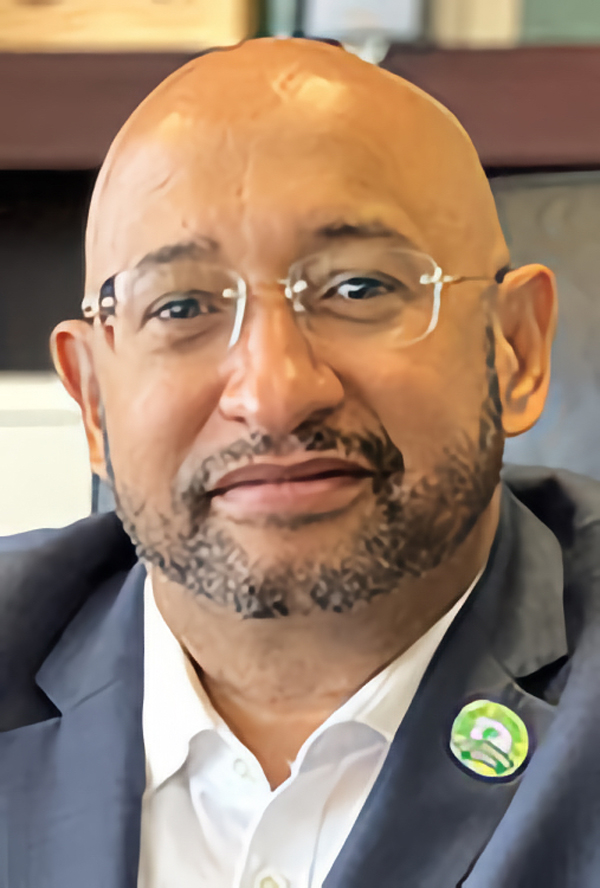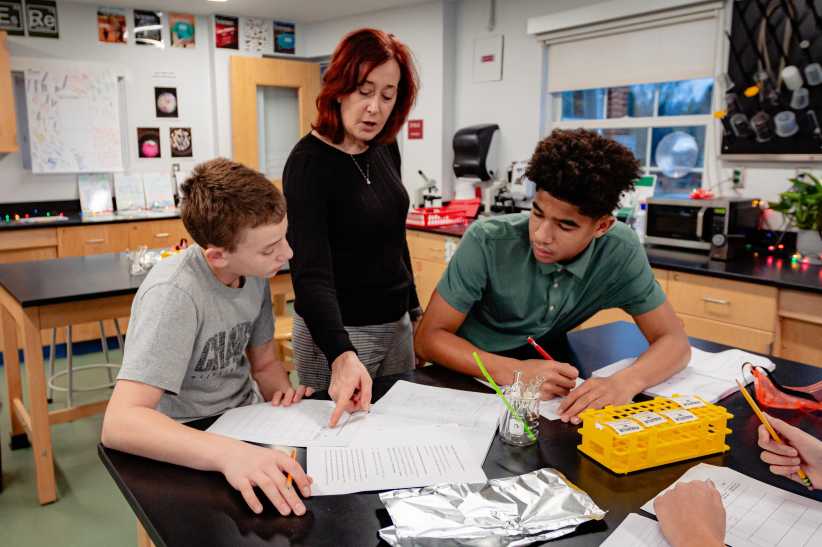In a second-floor gallery tucked inside a rowhouse on Maple Street, voices from across Brooklyn and beyond gathered Wednesday night to share personal tales that tied them to place, culture and memory — part of Gallery Particulier’s monthly “Collective Tales” storytelling series.
The latest installment, titled “Because, Roots,” invited audience members to explore the histories that ground them. Guests were greeted by a familiar symbol of connection — a New York City subway map — and asked to mark a spot that held significance. Later in the evening, they were invited to share stories inspired by those pins.
“Tonight we’re gonna be talking about roots,” said Justin Freeman, co-director of the gallery. “It’s really important to be grounded with yourself, with your community, friends and family.”
Freeman set the tone for the night by reflecting on his own journey: not knowing his father, the loss of his grandfather, dropping out of high school, joining the military, and the search for belonging.
“All I’ve been looking for is home,” he said. “It’s right here, it’s here with you guys.”

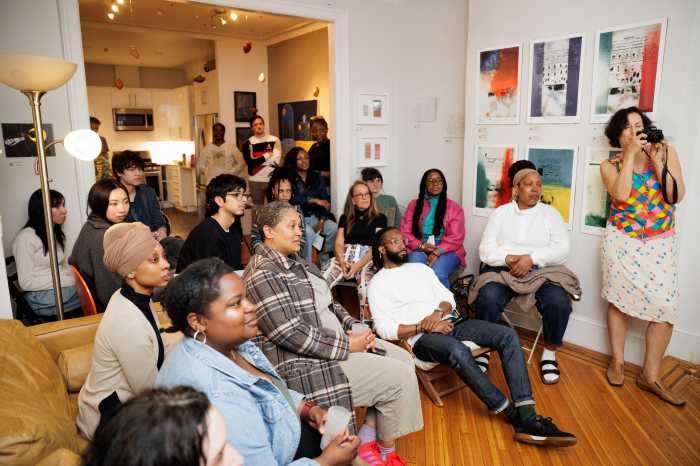
The event was hosted by local creative and gallery co-director Comrade Cav, who opened the evening with reflections on his childhood in England and the impact of the television show “Roots.”
“Everybody was watching it and Black people, it felt like we were bonded,” Cav told the crowd. “It felt like a Black consciousness came together through this program.”
He recalled watching the series with his family — a moment that, in retrospect, felt monumental. “It was just as important to see all my family together, gathered around … but looking back, I realize it was just a real extraordinary, unique moment.”
“When people say they’re going back to their roots, that is what comes to mind for me. A program that came on and brought my whole family together, our whole neighborhood together.”


Gallery Particulier, a nonprofit founded in 2022, is working to reshape how people engage with art — not in museums or commercial galleries, but in their own living rooms.
With a mission to make art more accessible and personal, the organization invites hosts to display works by local artists in their homes. The exhibitions often include intimate events such as the “Collective Tales” storytelling series.
The April 23 showcase unfolded like a living oral history of Brooklyn, with stories centered on immigration, family roots and the changing tides of gentrification. One person spoke of the loss of a longtime family home, now gutted and renovated, taking part of their history with it. Another lamented how their once-bustling block has grown quiet, transformed by rising rents and shifting demographics.
Shari Pascarosa, a Brooklyn native, shared stories of her ancestors in Sheepshead Bay and Coney Island, where her great-grandmother raised nine children alone during the Great Depression.
“She had two rooms in Coney Island and they were all squished into these two rooms, but in the summertime, it was so hot, they were out all night,” she said. “She said, they were poor as dirt, but they had the best time.”
Pascarosa added, “These were serious survivors. I wish I knew a fraction of the stories that are held in the memory of my ancestors. The ones that I know, I cherish.”

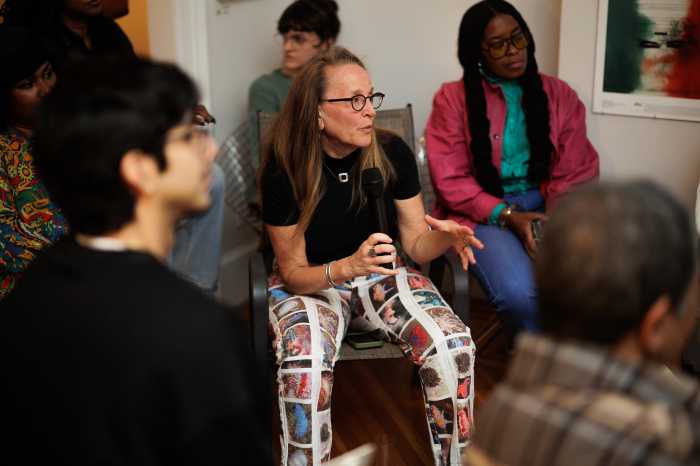
Chinyere Brown-Mcvitie, who grew up in East Flatbush, recalled realizing the cultural richness of her neighborhood as a child, surrounded by people from the Caribbean.
“I remember one day when I was a little girl, my cousin and I, we finally reached the age when we could take the train by ourselves and the train was just taking so long so us being kids we decided to run up and down the platform and one day we just stopped because we just said, ‘wow, why does this look like the Labor Day Parade in a painting?’” she said. “It was that moment when we realized, ‘whoa, we live amongst Caribbeans.’”
She noted the changes gentrification has brought, but celebrated the resilience of her community. “If you walk down even these streets during Labor Day, you see so many young people just honestly living life, being unapologetically Black, which is something that is not visual all the time.”
As the evening wound down, the audience was invited to contribute their own memories — a practice central to the “Collective Tales” series, which emphasizes connection over performance.
“In a place as layered and diverse as Brooklyn, our roots may look different — but they all matter,” Freeman said. “‘Because, Roots’ is about honoring those deep personal histories and making space for stories that don’t always get heard. It’s part of how we build real community — through listening, sharing and celebrating where we come from.”


